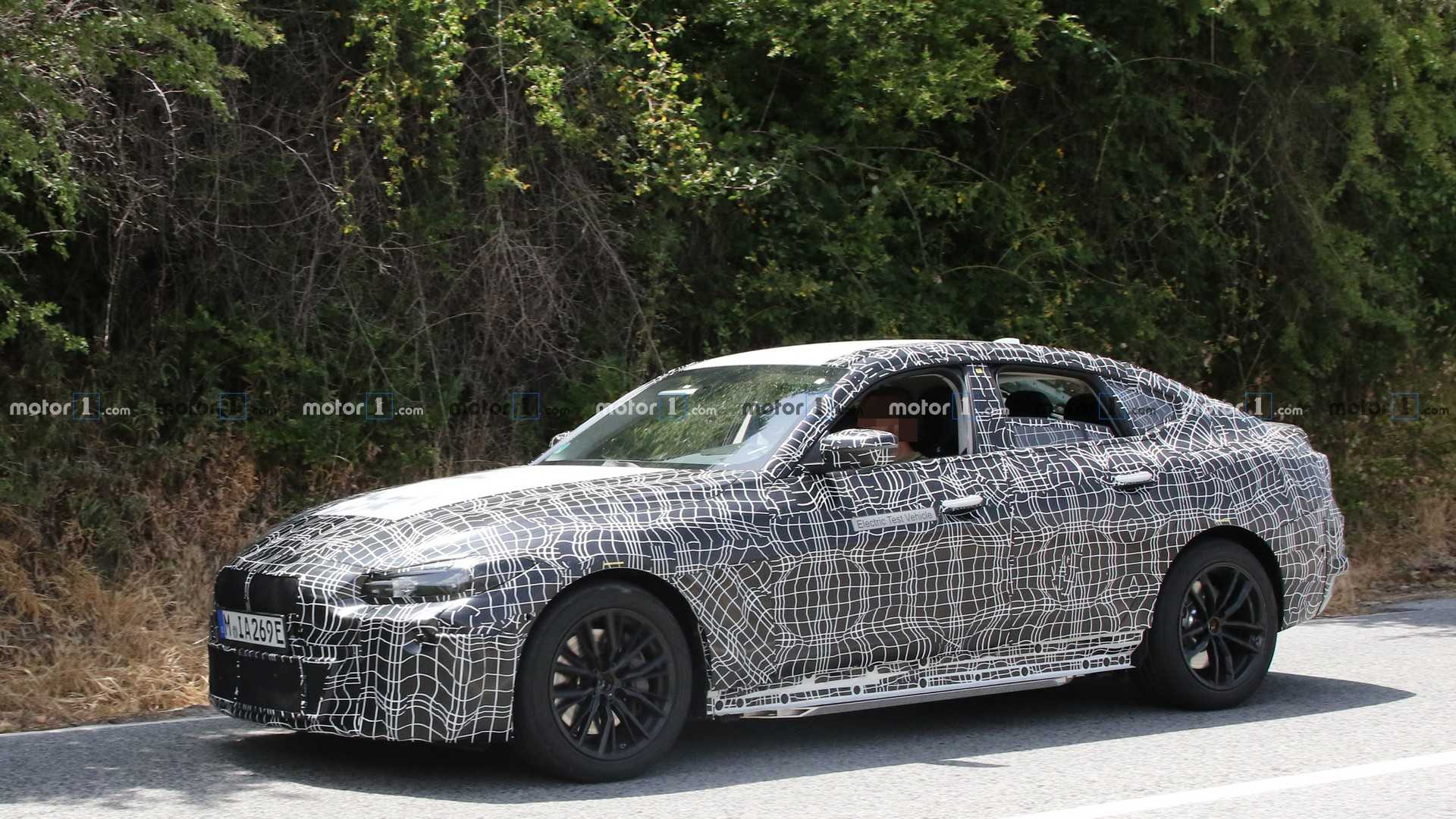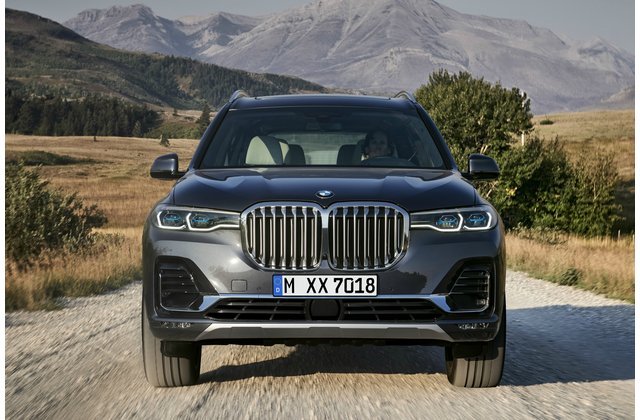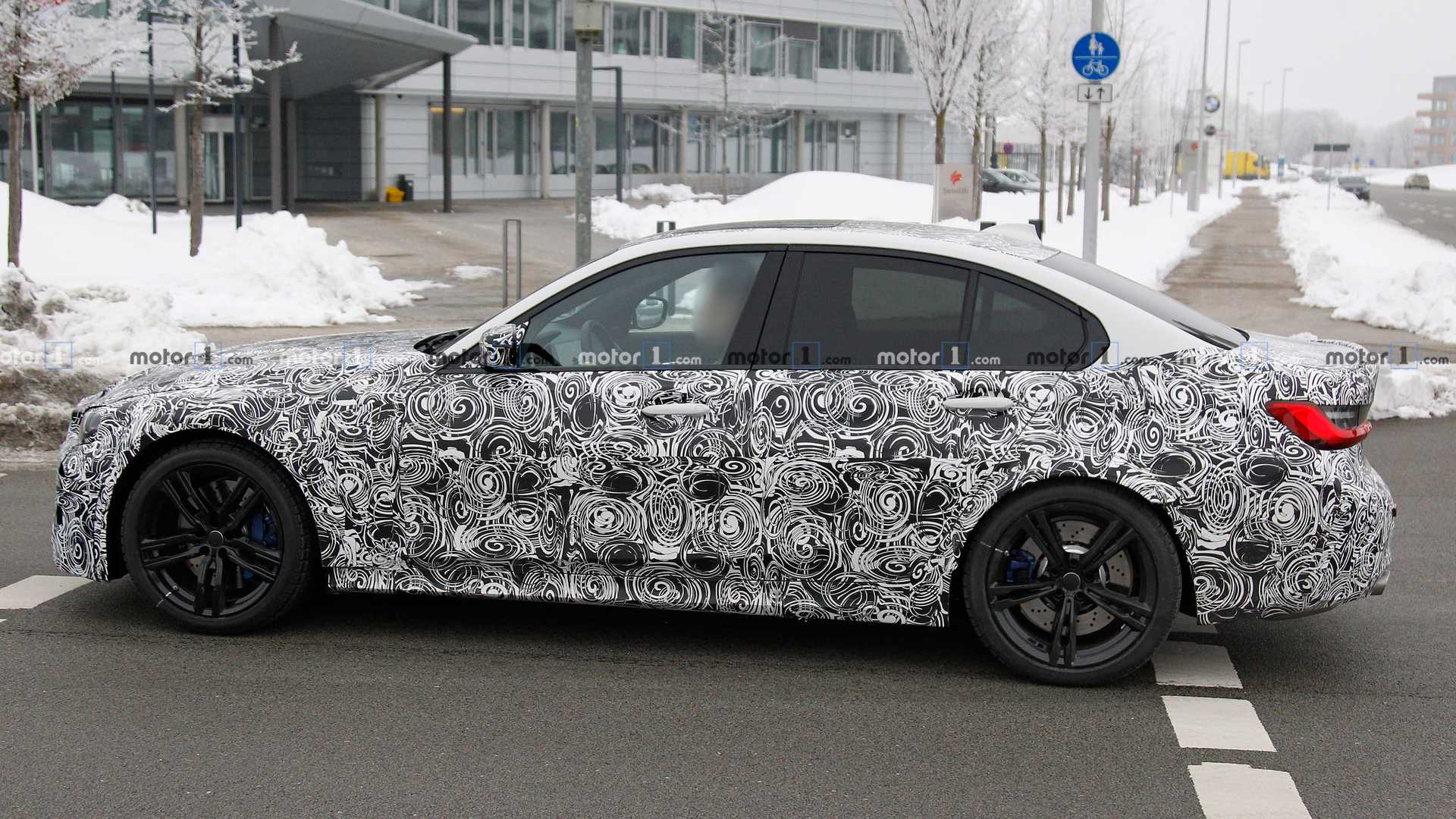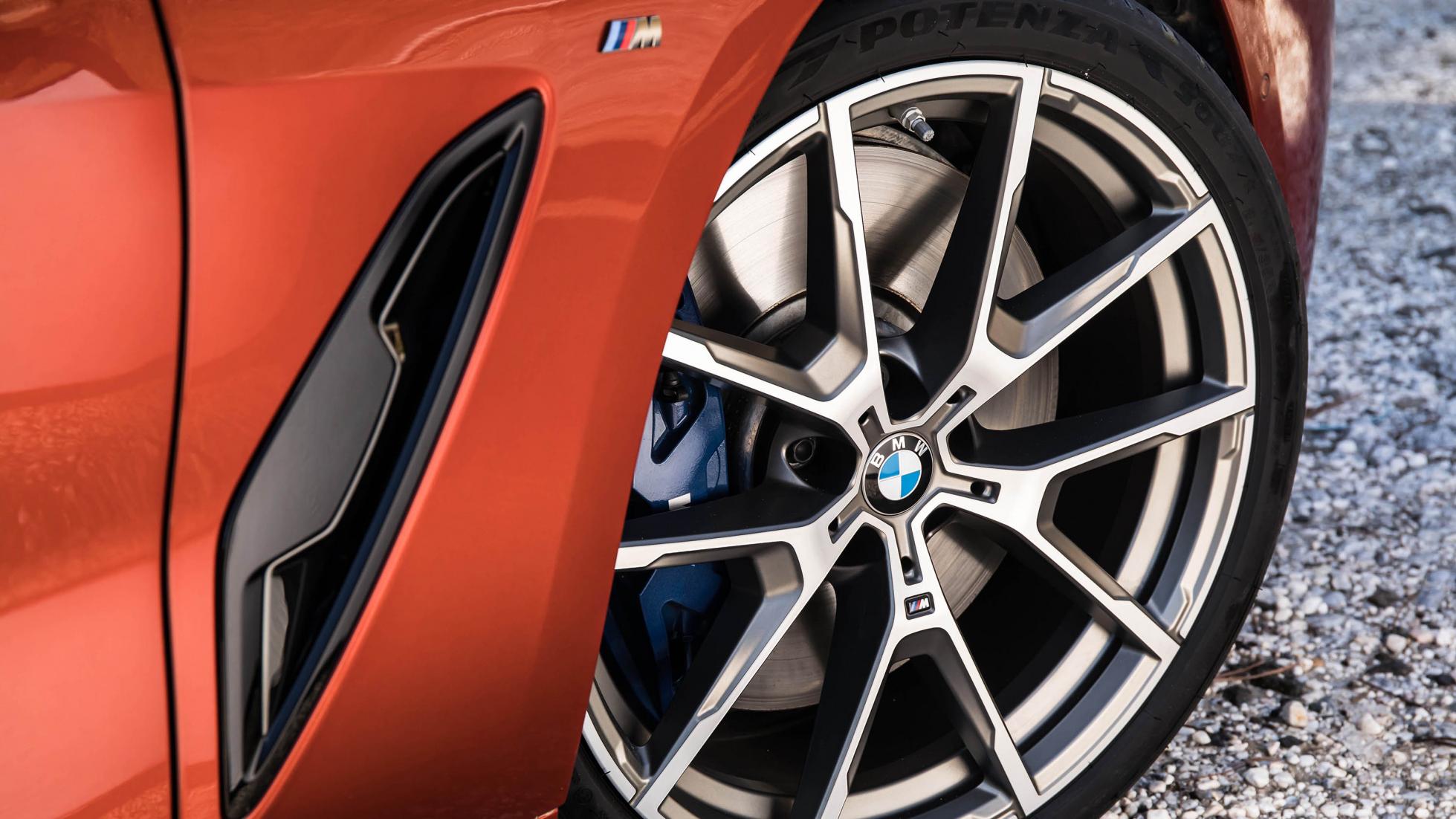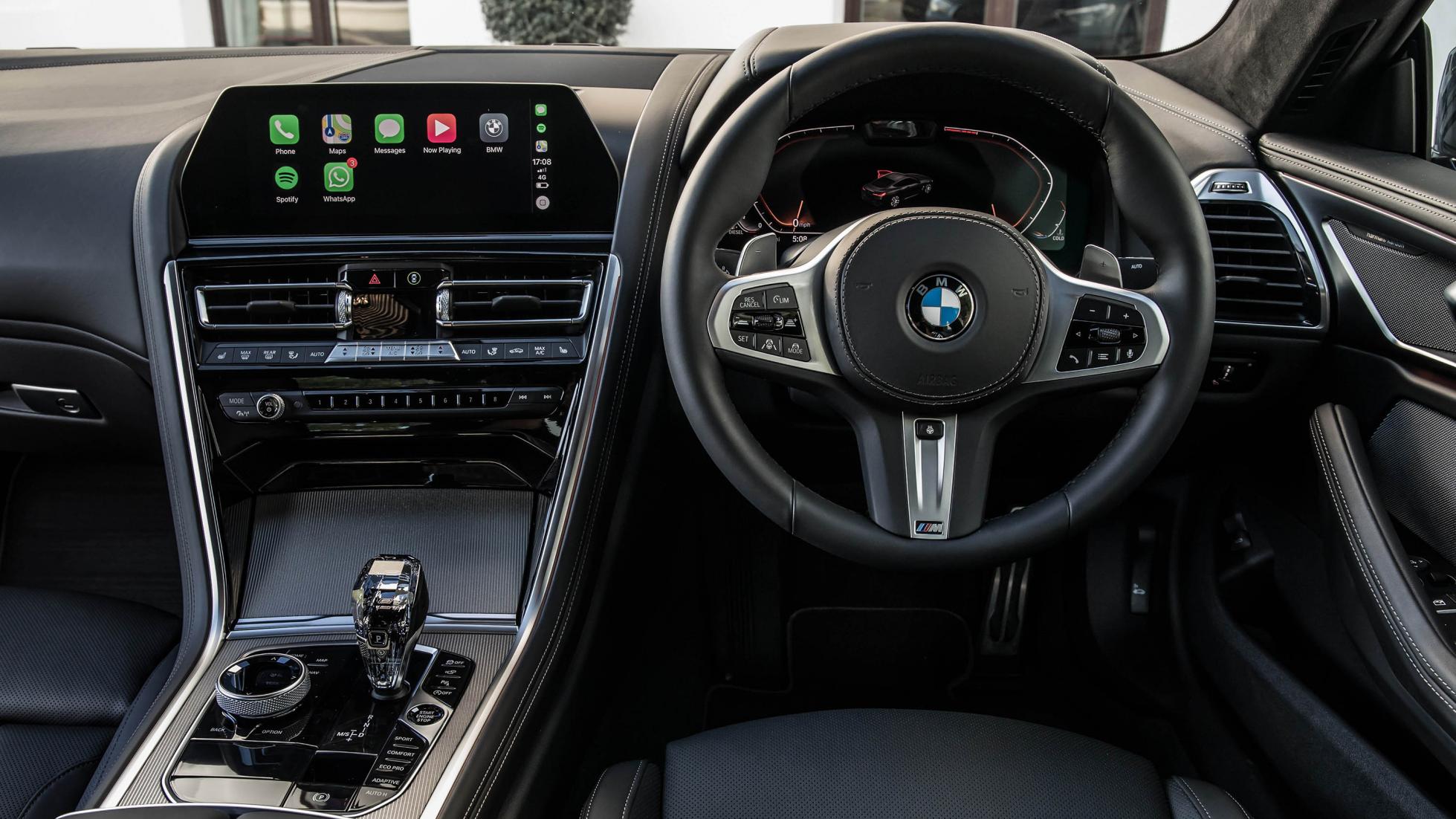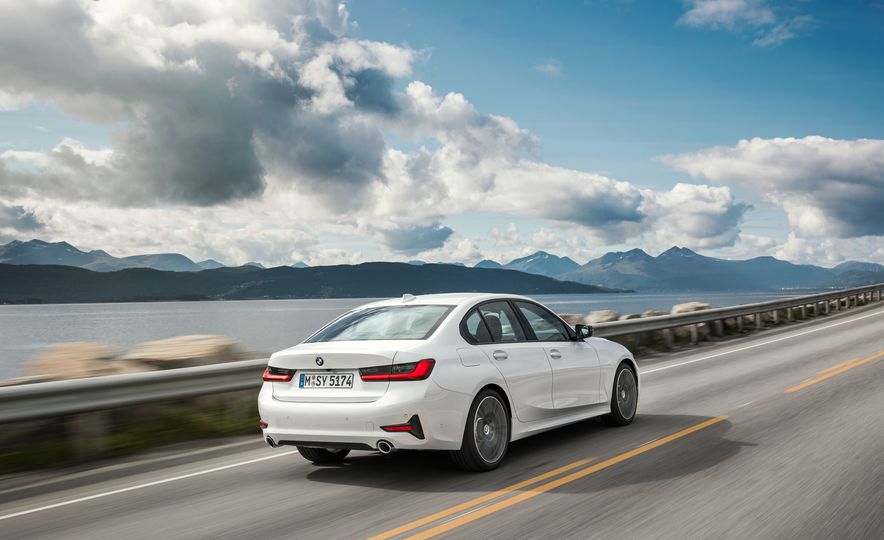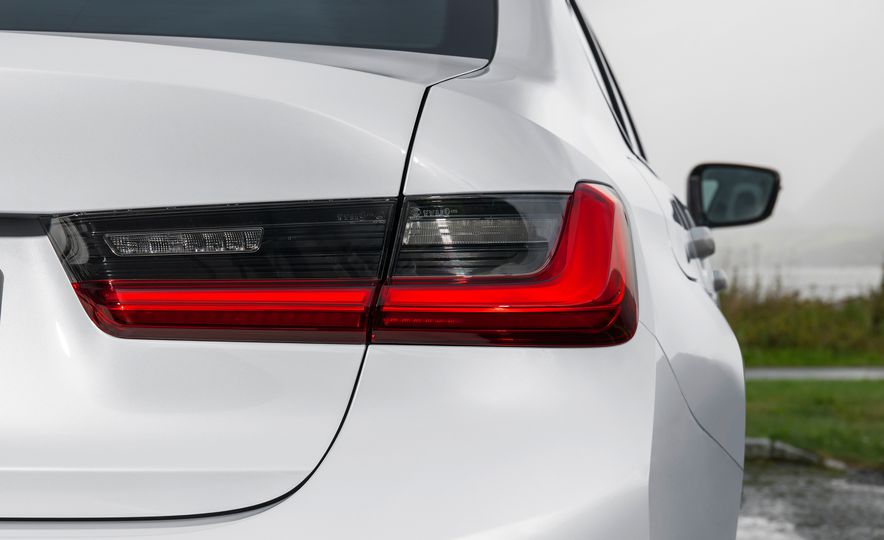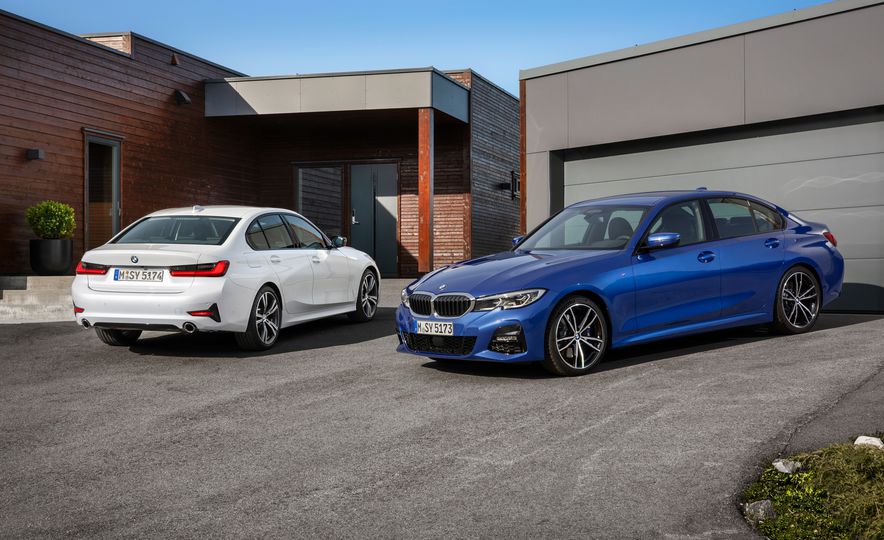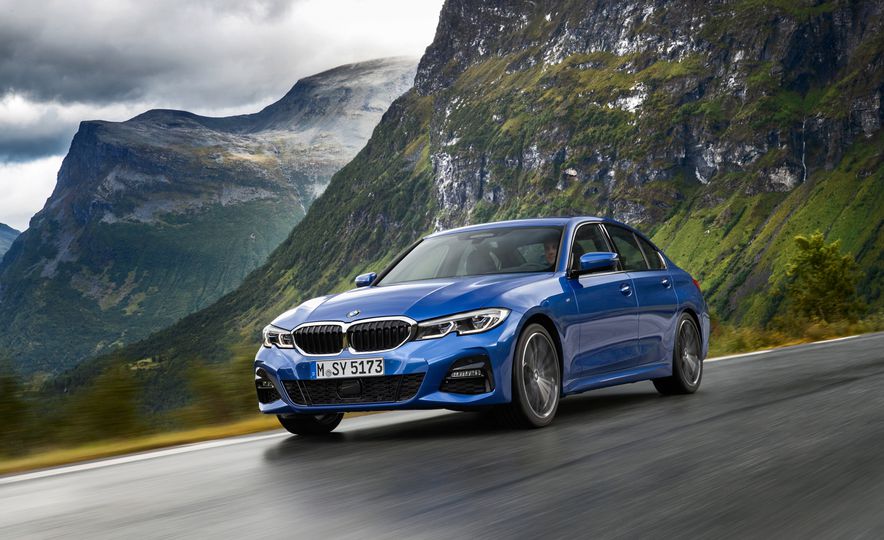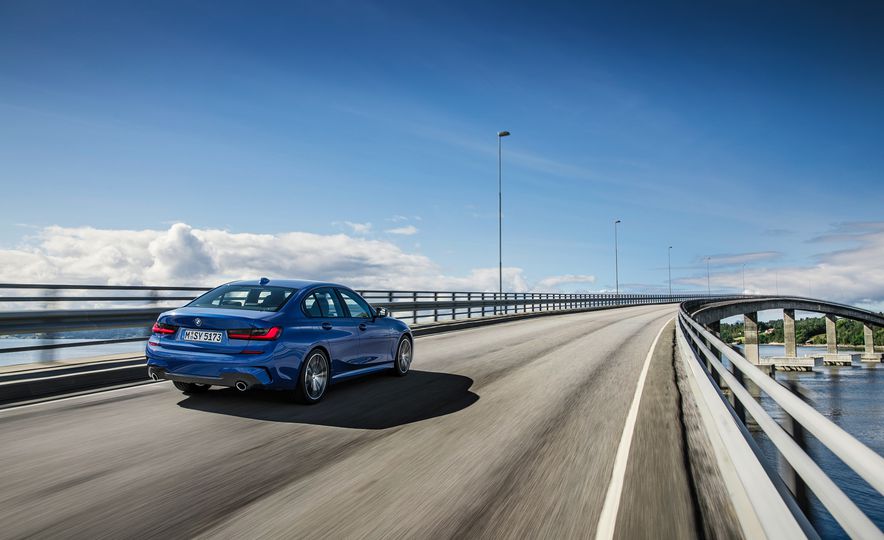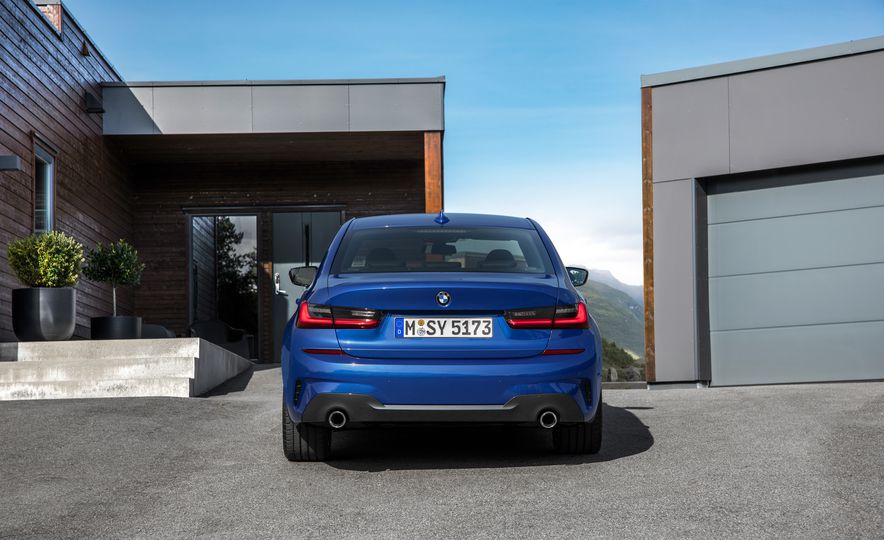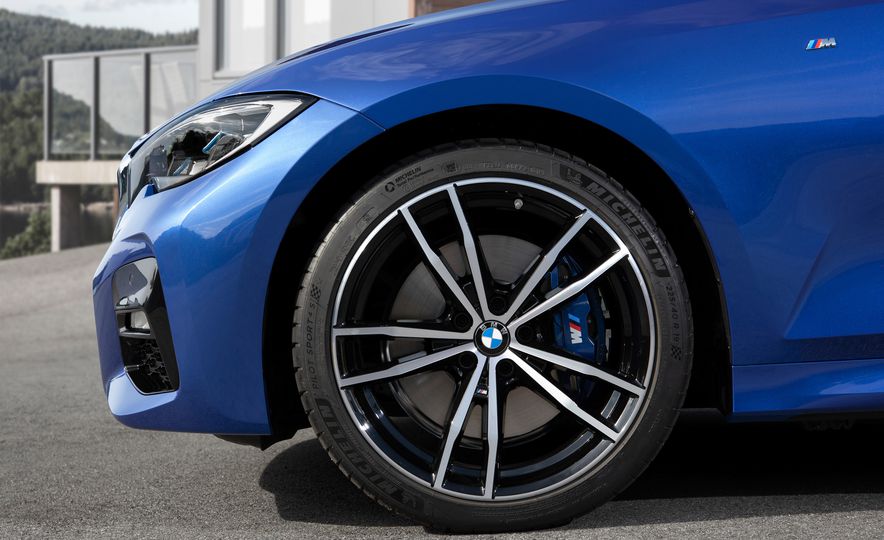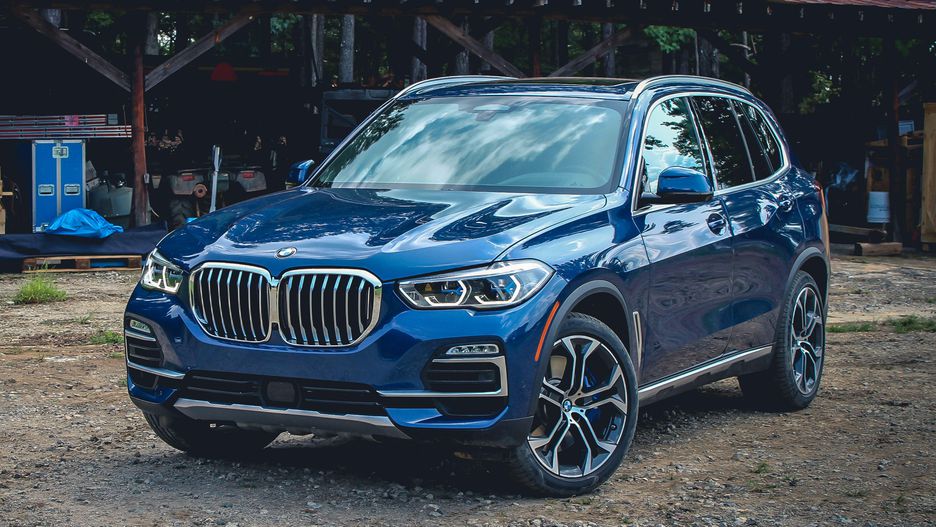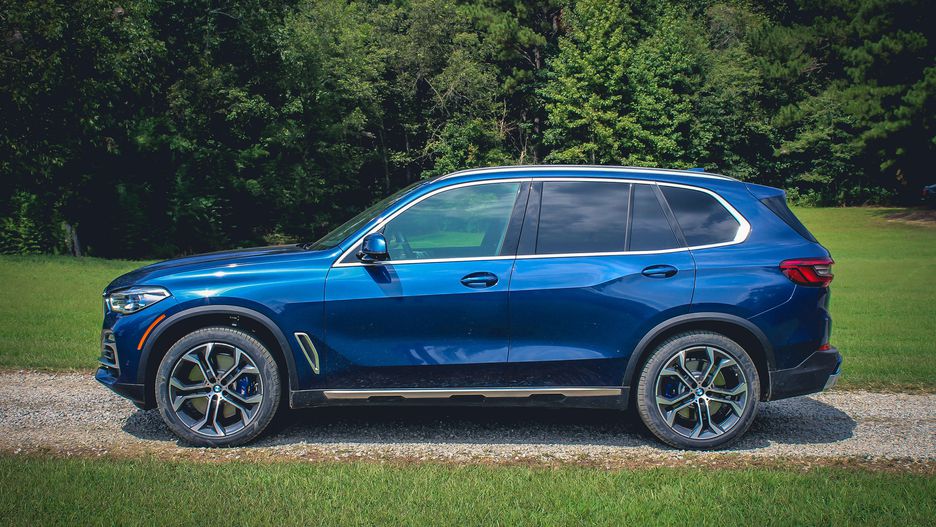To look at it, you could be forgiven for not immediately realizing that this 2019 BMW X5 is new. Unless you're an automotive enthusiast, you might not have spotted its upsized kidney grilles with drag-reducing active shutters, its more elaborate headlamps, or noticed its front bumper's air guide slots that route the passing atmosphere around the wheels to curb drag.
Indeed, while the 2019 X5's exterior changes are subtle, much of what's under the skin is actually quite revolutionary for the brand. There's a new underlying modular platform, CLAR, that's shared with the forthcoming 3 Series. And yes, there's also a new electronic architecture that enables the fitment of next-generation iDrive infotainment. Plus, there's a spate of new advanced driver assist systems, all of which combine to help futureproof BMW's most important vehicle for increasing levels of electrification and automation.
Oh, yes. I did just call the X5 BMW's Most Important Vehicle. If isn't already, it almost certainly will be within this fourth-generation's lifespan. While that mantle has arguably been held by the automaker's 3 Series range since the early '80s, today's new-car market is tilting ever more toward crossover SUVs. To that end, the X5 isn't just the paterfamilias of all BMW utility vehicles, it's the become the nexus of a brand historically best-known for sporty driving. While BMW won't say it, the X5 is very likely the company's biggest profit center -- if not worldwide, certainly in the US and Canada. BMW has sold 2.2 million X5 SUVs since the model's 1999 inception, making it a cornerstone of the Roundel's global business.
Understandably, then, the Germans have thrown everything but the kitchen sink at the 2019 X5. At first blush, after a day's drive around greater Atlanta -- including tackling a surprisingly technical off-road course -- this new generation shows great appeal and a broader array of talents. From comfortable freeway cruising to scrambling up muddy, root-strewn forest slopes to digging into its sophisticated new infotainment system, the X5 has something for everyone.
(Slightly) bigger britches
While the new X5 looks similar to its predecessor, it spans 1.1 inches longer, stands an inch taller and wears shoulders that are 2.6 inches broader than before. Despite the dimensional increases, the new X5 is still firmly in the pocket of the midsize premium SUV segment, where it competes with a murderer's row of talent, from the Audi Q7 to the Mercedes-Benz GLE, along with strong but less-traditional picks like the Acura MDX, Land Rover Range Rover Sport and Volvo XC90.
Nor does this enlarged X5 feel less nimble than before. I sampled the xDrive40i, Bavarian-alphabet-soup-speak for an all-wheel-drive model fitted with the 3.0-liter twin-scroll turbocharged inline six-cylinder giving 335 horsepower and 330 pound-feet of torque. Whether negotiating dense Atlanta traffic or picking its way along a narrow forested two-track, it never felt unwieldy or underpowered.
At least initially, in North America, all X5 models will be AWD, with power coming via an updated eight-speed automatic transmission featuring new software, a broader ratio spread and redesigned torsion dampers for improved efficiency and smoother gear changes.
This is hardly revolutionary powertrain hardware, but it needn't be -- the outgoing X5 was a willing co-conspirator in everything from the Costco run to serenely blitzing down the Autobahn at triple-digit speeds, and these changes should do nothing to endanger that reputation. BMW quotes 0-60 miles per hour in 5.3 seconds for the xDrive40i, which is plenty quick.
If you're a performance glutton, there will also be a turbo V8 model available when the 2019 X5 launches on November 10, and it conjures up 456 horsepower and 479 pound-feet to reach 60 mph in just 4.6 seconds, metrics that should slake the power hungry until the inevitable X5 M performance model arrives.
A new plug-in hybrid version with significantly more all-electric range is on the horizon, too, though other markets will see it well before North America.
BMW has yet to detail the 2019 X5's fuel economy figures, but if anything, they're likely to be a skosh better than last year's models. (For reference, the 2018 xDrive35i netted 18 miles per gallon city, 24 highway and 20 combined).
Strong first impression
My on-road time was rather limited for this early X5 drive opportunity, but there was very little to complain about dynamically. I found noise isolation to be very good on the region's generally smooth (if sometimes coarsely grained) surfaces, with velvety power delivery, a compliant ride -- even on my tester's optional 21-inch wheels -- and accurate, well-weighted steering. In some X5 models of the past, the latter could be unnecessarily heavy, but BMW has wisely resisted that temptation here.
I'll need more time on more demanding roads to find out how well the South Carolina-built X5 performs when it's really being pushed, as a tight launch event schedule prevented me from finding a properly twisty route. In truth, however, most owners never work their SUVs very hard, so it's questionable whether they'll really take advantage of the 4,800-pound X5's newly standard electronically controlled dampers (which offer both sport and comfort modes).
I suspect the base steering and suspension setups will satisfy most buyers' needs, but I likewise foresee a good percentage of folks loading their X5s up with optional four-wheel air suspension and the newly available Integral Active Steering (IAS). The latter is an electromechanical four-wheel system that turns the rear wheels in the opposite direction at low speeds to improve agility, and cocks them slightly same-phase at high speeds to aid stability.
IAS is a standalone option ($1,150), but for full effect, buyers may want to pair it with the X5's Adaptive M Suspension option, which includes swivel motors that act on the anti-roll bars to flatten the chassis in cornering.
Surprisingly willing to play dirty
Among the 2019 X5's updates to its running gear, its new Off-Road Pack may be the most unexpected. Even US BMW officials I spoke with said they didn't know if X5 many customers have been asking for augmented rough-and-tumble abilities, but for 2019, buyers will have the option to fit a new Off-Road Package ($3,950) that includes an electronically controlled rear limited-slip M Sport differential, two-axle air suspension, four off-road drive modes (xSand, xSnow, xRocks and xGravel) and front and rear skid plates. The air suspension itself offers up to 3.2 inches more ground clearance than the base setup.
While it's debatable whether X5 customers will find the Off-Road Package enticing, in my experience on a slippery and unexpectedly demanding forest course (some of which was marked with signs from a Land Rover club), the X5 was nothing less than shockingly competent -- even on street-oriented Pirelli P Zero summer rubber.
Among myriad new technologies, the X5 features a 360-degree camera suite (with remote view) that helps the driver expertly place the vehicle on the trail between objects, trees and rocks, working with the radar sensors to call out objects of immediate concern. In what is very likely a technological first, the X5's "touchdown detection" can even detect when it has become high-centered on an object like a log or boulder. It cleverly does so by leveraging its existing network of sensors. The air suspension looks at expected load versus actual load and ride height on a corner-by-corner basis. Combined with wheel-slip sensors, the vehicle can determine if it's hung up on an object underneath and temporarily raise its air suspension to surmount it.
The X5 may not be as inherently capable off-road as something from Land Rover, but it isn't as far off as you might expect, either.
All the screens, all the tech
The 2019 X5's cabin is at once all new and immediately familiar, and that's a good thing. Fresh touches like available crystal switchgear ($650), heated/cooled cupholders and additional open-pore wood choices up the luxury quotient, yet current X5 owners will feel right at home.
The success of the new X5 may well come down to how comfortable new owners get with iDrive 7 infotainment, which is radically revamped. While the old system's functionality relied overwhelmingly on its rotary knob, this new system will likely have users tapping and swiping on its 12.3-inch touchscreen as often as they use the multi controller. Whereas the old iDrive screen was divided among six panels (three of which were visible at any given time), the new setup uses a left-side menu bar with shortcuts and the driver's choice of three different pane layouts. In fact, the driver can define up to 10 pages of widgets to suit their preferences, including things like weather, news and online search via the 4G LTE hotspot.
There's also a new reconfigurable digital gauge cluster that BMW calls Live Cockpit, and an impressively huge and crisp optional head-up display to relay even more information.
Being faced with all of those screens and all of those choices at once probably sounds daunting, but in my brief experience with iDrive 7, it all felt quite intuitive. The system smartly allows for the driver to use their preferred interface method, be that via touchscreen, steering wheel switchgear, cloud-based speech recognition or even gesture control. (A word about the latter: It's still overwhelmingly gimmicky. Twirling your finger in the air to turn up the stereo remains a crowd-pleasing novelty, but little more).
The main map screen can become overly crowded with information, but it's possible to pare back things like points of interest to make it clearer. And if BMW's interface doesn't do it for you, Apple CarPlay is included (as a subscription service -- the first year is free, but then it's $80/year thereafter), and the Bavarians still aren't on speaking terms with Android Auto. Juicing up your devices should be easy, though, with available wireless charging as well as USB-A and USB-C ports.
Cloud connected
There's quite a bit of personalization possible with iDrive 7, which is why it's nice that BMW Connected Drive's can match driver preferences to a cloud-based profile that can be carried from vehicle to vehicle by key or smartphone. With this tech, you don't have to set up your presets and shortcuts from scratch every time you get into a new BMW. (The Germans are clearly prepping for a future that involves car-sharing and subscription services).
BMW's Open Mobility Cloud also facilitates connecting the X5 to the driver's other smart devices, including Google Home, Alexa-enabled devices and smartwatches like the latest Apple Watch.
Safety first, second and third
The other linchpin of the new X5 is its massive suite of available advanced driver assist systems. The 2019 X5 can be loaded up with enough gear to negotiate low-speed freeway traffic in hands-off fashion provided certain road conditions are met. When activated at speeds up to 37 mph, an X5 equipped with Extended Traffic Jam Assistant will keep itself centered in its lane and negotiate stop-and-go traffic on its own, using radar and a forward-facing camera to find its way.
ETJA includes a driver monitor camera to make sure the individual at the wheel hasn't nodded off or become engrossed in a round of HQ Trivia on their phone. The system also adjusts for posted speeds and other traffic conditions using traffic sign recognition and map data. If a driver fails to retake manual control from ETJA even after a series of warnings, the vehicle can automatically pull itself over to a stop with its hazard lights blinking and use the onboard telematics to place an emergency call.
Like a Tesla, the X5 can also execute automated lane changes when the driver calls for one by activating the turn signal stalk.
Overall, BMW spokespeople consider this to be a "strong Level 2 system," and in this regard, it seems roughly as capable as the new US-bound Audi A6, A7 and A8 models (though the Bimmer doesn't have onboard lidar). Functionally, it feels more robust than the Autopilot system on Tesla's current range.
Even if you don't splurge on Extended Traffic Jam Assistant, every X5 still comes with blind-spot detection, front and rear pre-collision warning, lane-departure warning and rear cross-traffic alert, among other features.
One other noteworthy new feature? Back-Up Assistant, which automatically memorizes the final 165 feet of travel before you park your X5. Like a virtual popcorn trail, the system will automatically back you out of tight spaces by retracing the steps you used to park in the first place. Back-Up Assistant handles the steering, you man the accelerator and brake pedal. For those with tight or technical driveways and parking garages, this tech could be a game-changer.
You can keep the lane-keep, BMW
If there's a fly in the X5's ADAS ointment, it's that its lane-keep assist is a bit hyperactive and in need of further calibration. Like an annoying backseat driver, it proved simultaneously overly vigilant and occasionally heavy-handed in its machinations on my drive. If the driver drifted a little too close to a solid painted line on the road, it tugged at the steering and its new by-wire braking, abruptly pulling the vehicle back in line -- even when there was no real reason to be concerned.
This wasn't just my experience -- my co-driver noted the same phenomenon, as did other reviewers on our program.
Tiptoe through the options list
If the X5's long list of available features have you picturing a dizzyingly expensive SUV, remember, it all comes down to how disciplined you are when ordering. The well-equipped base 2019 X5 starts at $60,700 plus $995 delivery, but my comprehensively accoutered tester cost over $81,000 as tested. If you can avoid the option list's myriad nice-to-have-but-ultimately-unnecessary extras like the Off-Road Package and Integral Active Steering, this new X5 can actually come across as quite fairly priced.
And don't worry -- if for some reason you want more space and more lux than what's possible in this X5, help is on the way -- a larger, range-topping X7 will soon arrive brandishing more of everything.
For 2019, BMW wisely hasn't radicalized the X5's appearance or feel, risking the franchise in the bargain. Instead, the company has fashioned a familiar look in order to Trojan Horse much of its near-term technological future in an nonthreatening shell.
The stakes couldn't be higher. Back in 1999, the first X5 was a major gamble. Today, this SUV is the unexpected heart of its company's fortunes.
While not perfect, the 2019 X5 seems well placed to bridge the BMW of today and the increasingly autonomous, electrified BMW of tomorrow.







